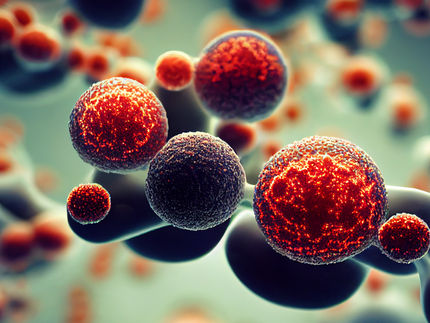Study reveals stem cells in a human parasite
Advertisement
From the point of view of its ultimate (human) host, the parasitic flatworm Schistosoma mansoni has a gruesome way of life. It hatches in feces-tainted water, grows into a larva in the body of a snail and then burrows through human skin to take up residence in the veins. Once there, it grows into an adult, mates and, if it's female, starts laying eggs. It can remain in the body for decades.
A new study offers insight into the cellular operations that give this flatworm its extraordinary staying power. The researchers, from the University of Illinois, demonstrated for the first time that S. mansoni harbors adult, non-sexual stem cells that can migrate to various parts of its body and replenish tissues. Their report appears in the journal Nature.
According to the World Health Organization, more than 230 million people are in need of treatment for Schistosoma infections every year. Most live in impoverished areas with little or no access to clean water. Infection with the worm (also known as a blood fluke) can lead to damaging inflammation spurred by the presence of the worm's eggs in human organs and tissues.
"The female lays eggs more or less continuously, on the order of hundreds of eggs per day," said U. of I. cell and developmental biology professor and Howard Hughes Medical Institute Investigator Phillip Newmark, who led the study with postdoctoral researcher James J. Collins III.
"The eggs that don't get excreted in the feces to continue the life cycle actually become embedded inside host tissues, typically the liver, and those eggs trigger a massive inflammatory response that leads to tissue damage."
Children are especially vulnerable to the effects of infection, in some cases experiencing delays in growth and brain development as a result of chronic inflammation brought on by the parasites.
The new study began with an insight stemming from years of work on a different flatworm, the planarian, in Newmark's lab. Collins thought that schistosomes might make use of the same kinds of stem cells (called neoblasts in planarians) that allow planarians to regenerate new body parts and organs from even tiny fragments of living tissue.
"It just stood to reason that since schistosomes, like planaria, live so long that they must have a comparable type of system," Collins said. "And since these flatworms are related, it made sense that they would have similar types of cells. But it had never been shown."
In a series of experiments, Collins found that the schistosomes were loaded with proliferating cells that looked and behaved like planarian neoblasts, the cells that give them their amazing powers of regeneration. Like neoblasts, the undifferentiated cells in the schistosomes lived in the mesenchyme, a kind of loose connective tissue that surrounds the organs. And like neoblasts, these cells duplicated their DNA and divided to form two "daughter" cells, one of which copied its DNA again, a process that normally precedes cell division.





























































